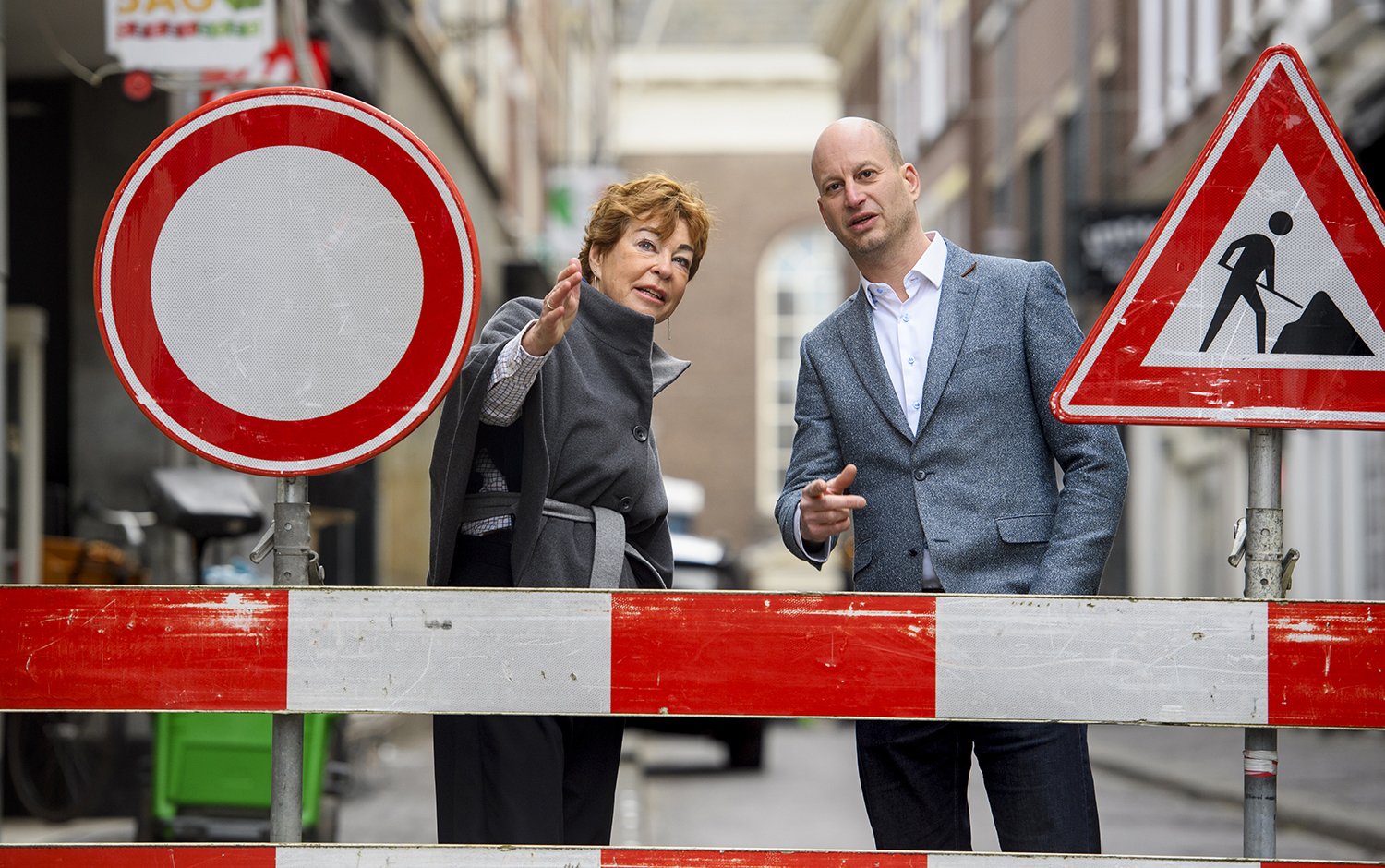Affordable and efficient services
Smart and digital are the norm in efficient business operations. Efficiency means cost savings, but also shorter lead times, less inconvenience for local residents and increased customer satisfaction. Below, we give a number of examples that illustrate the benefits.
Multidisciplinarity, efficiency and customer satisfaction go hand in hand
Coordinating activities with partners 'below ground' enables us to achieve substantial economies of scale. We now have cooperation agreements with water companies Evides, Vitens and Dunea. There is significant overlap within this coverage area with Evides in particular. At the moment, Stedin and Evides coordinate their activities across no fewer than 70 projects. Simply working at the same time allows us to achieve a cost reduction of 6%. We expect that we will eventually be able to achieve a 20% cost reduction. Environmental benefits occur as well, such as less inconvenience for local residents from roadworks. There is tremendous potential in this multi-disciplinary approach, given the scope that it provides for avoiding many more duplicate costs. We will expand this approach further in 2020. From 1 January 2021, we will contract a single contractor more often to carry out our joint activities. This process will allow us to cope with the scarcity of contractors as well as to contain costs.
Transition together
Collaboration in Waalhaven-Zuid
In Waalhaven-Zuid, an area that looks out over the Port of Rotterdam, Evides and Stedin are coordinating their activities below ground. Waalhaven-Zuid is a sprawling area covering 105 hectares that is being completely redeveloped. It is also a complex area, with polluted port sludge and unexploded ordnance, whose accessibility for transport companies must be safeguarded. In total, the work involves replacing 5.8 km of cast iron gas mains with PE gas pipelines, as well as replacing 3.3 km of low-voltage cables and 1.2 km of medium-voltage cables. The replacement is being carried out simultaneously with Evides. There is one operations team that is responsible for execution, progress, safety, accessibility and environmental management in the area. A special feature is the intensive involvement of the Port of Rotterdam Authority and the municipality of Rotterdam in the project as well. This collaboration has many benefits, including reduced environmental impact and an expected cost reduction of 15%. The exchange of knowledge, such as working in a proactive safety culture, is also valuable. The project started in August 2018 and is scheduled for completion by September 2020.
First Time Right
At Stedin, we believe that it is important to do things right the first time. This approach leads to increased efficiency, effectiveness, safety and customer satisfaction. We have set up measurements within a range of different processes to show how much of what we do is First Time Right. Within Construction & Replacement, the full and accurate delivery of data on outside work in one go is a leading priority. In 2019, we were successful in 81% of cases. This figure is a slight improvement compared with 2018. We also endeavour to implement the large-scale roll-out of smart meters the first time right as far as possible, reducing the volume of additional work and eliminating the need for returning to the same customer. Here as well, we are successful in four out of five cases.
Process improvement with contractors
We concluded master agreements with our principal contractors three years ago. At the end of 2018, the agreements were extended by two years and we commenced preparations for process improvements. This will allow us to better match supply and demand concerning personnel deployment, and contractors will now perform a larger portion of the preparatory activities. This way of working is more efficient. We are also improving the quality of delivery. Implementation commenced on 1 January 2019.
Efficient connection of charging stations for electric cars
The number of electric cars in the Netherlands continues to grow each year. Demand for electric charging points is expected to double in the coming years. As with other connections, the waiting time for connecting a charging station is 18 weeks. Stedin is successfully developing an efficient method for installing charging stations quickly and at lower cost in Utrecht, The Hague as well as Rotterdam. Three parties are involved in the installation of charging stations: the municipality, the charging station operator and the grid manager. In practice, the work carried out by these three parties does not always take place at the same time. It is not uncommon for a parking space to be reserved first, followed by the actual installation of a charging station several weeks later, for example. This process is frustrating for residents and drivers of electric cars alike. The new working method will solve this problem. The three parties nominate one party that is authorised to carry out all the steps in one go.
Centralisation of support activities
Stedin facilitates the energy transition by focusing on core tasks. This approach also extends to our internal operations. Support processes are centralised as far as possible, freeing operational departments to concentrate on their core tasks. In 2019, we started a process of intelligently standardising and combining of administrative tasks. The resulting quality and efficiency improvements are expected to reduce costs by 25–30%.
You can read more about the savings produced by our five-year efficiency programme in the section on Financial results.

Ans Groenewegen (Dunea Duin & Water) and Gijs Lambooij (Stedin Netbeheer) are both Strategic Environmental Managers. Gijs Lambooij: 'True cooperation is built on trust. You develop this trust by "transitioning together" at a very early stage, which is exactly what Dunea and Stedin are doing. One example of this is the use of a covenant in which mutual implementation is aligned as soon as possible. Another example is complicated renovation work in the city centre, for which we enter into a joint dialogue with the municipalities as well as the environment early on to discuss the manner of implementing the work, as well as its usefulness and necessity. '
